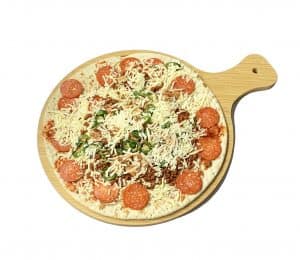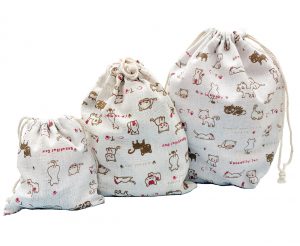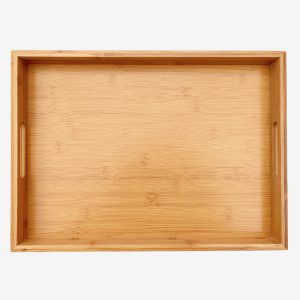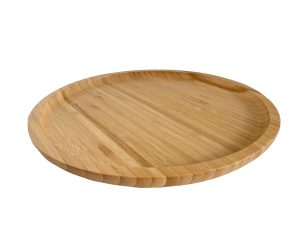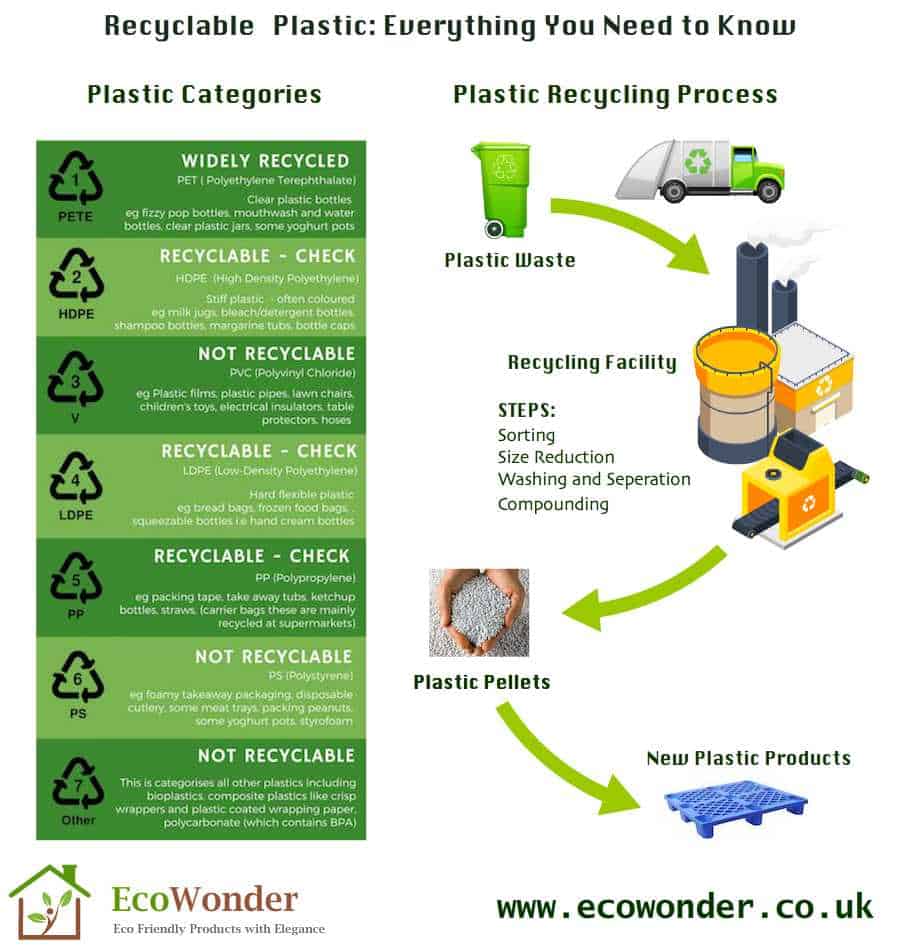Plastic is one of the most widely used consumer materials of modern times – from bottles and bags to less obvious sources like teabags and clothes. Its widespread use and environmental threats require us to handle it responsibly and correctly. Most people want to dispose of their waste plastics responsibly, and with the general understanding of the process and recycling infrastructure in place, we can optimise the lifespan of plastics by re-using and recycling items as many times as possible.
The different types of plastic
All modern plastic items have a recycling symbol with a resin identification code (RIC) number on them indicating what category of plastic they fall into. The symbols will be placed on the back of the product label, usually printed very small in the corner. There are seven classifications for plastics and let’s take a look at each and see how easy they are to recycle.
1.Polyethylene Terephthalate (PET)
PET is one of the most common forms of plastic, which is clear, strong, and lightweight, and its primary use is for packaging food and beverages, especially soft drink and water bottles. PET is a highly recyclable material and it is accepted at most recycling centres throughout the world.
2.High Density Polyethylene (HDPE)
HDPE is the stiff and strong plastic which is used for containers of substances such as bleach, shampoo and detergents. HDPE is recyclable and reusable and is also considered one of the safest forms of plastic as it has a low risk of leaching into foods or liquids. Avoid exposing HDPE plastic containers to sunlight or excessive heat to prolong their lifespan.
3.Polyvinyl Chloride (PVC)
PVC, also known as vinyl, is a flexible plastic common for construction such as window frames or personal applications such as shoes. Substances called phthalates are added to PVC to make it flexible, but these chemicals may cause cancer, kidney and reproductive system damage to animals and human. PVC is also difficult to recycle given the presence of additives including heavy metals such as lead and cadmium; in fact, it’s considered a contaminant in other recycling streams. Currently under 1% of PVC is recycled. Ideally, you should look for alternatives that are PVC-free to reduce your exposure to this potentially toxic plastic.
4.Low Density Polyethylene (LDPE)
LDPE is used to make thin plastic bags for food packaging and consumer goods. It is often cited as the most polluting plastic products – turning up in the ocean where they cause havoc to the ecosystem. Although LDPE is recyclable – just 5% of what is produced gets recycled. Try to reduce your use of LDPE plastic by switching to alternatives to plastic grocery bags such as cloth tote bags.
5.Polypropylene (PP)
Polypropylene is lightweight yet durable with heat-resistance properties, so it is widely used as single-use drinking straws and containers for hot drinks. When recycled, PP can be used to make landscaping borders, battery cases, brooms, bins, and trays. Unfortunately, less than 2% of PP gets recycled yearly due to its low worth and cheap production. You can reduce your PP use by opting for alternative products such as reusable drinking straws and reusable coffee cups etc.
6.Polystyrene (PS)
Polystyrene is commonly known as “styrofoam” and famously difficult to recycle. This material is cheap to produce, lightweight and widely used for food package and wall insulation. Due to its toxic chemicals, PS is commonly not recyclable or reusable. I would recommend avoiding it completely and look for eco-friendly packaging alternatives such as biodegradable paper.
7.Other Plastics
This category includes some common plastics such as polyactide – used in 3D printing – and polycarbonate which is used in roofing. There is no one-size-fits-all solution to recycling plastics stamped with a number 7, some of them are recyclable and some are not. BPA or bisphenol A in this category is widely known its potentially harmful effects as a hormone disruptor that can cause health problems. It’s better to avoid number 7 plastics, especially for children and baby products.
How are Plastics Recycled?
You may wonder what happens to the recyclable plastic items when they are taken to a recycling facility and how to turn discarded plastic into new products. There are several steps of the plastic recycling process:
The first step is sorting according to recyclable plastic type. Sorting is done manually or with sorting machines using technology with infrared, x-ray or other cutting-edge sensors that recognises different sorts of plastic polymer types. Colour detection is possible with some sensors that are able to sort specific colours apart from others.
The next step is the size reduction of the plastic waste. Plastic is shredded and crushed into tiny flakes with shredders and granulators for further processing and easier handling. These machines have industrial blades that perform rotational cutting to chop down the plastic, which is passed through a screen and then taken away for the next stage in the process. Additionally, it gives recycling facilities one last opportunity to remove any non-plastic waste, which is often done with metal detectors or magnets that will help remove any leftover metal in the mixture.
Next come the separation phases. After sorting and cutting, the plastic pieces can be washed to remove traces of dirt and contaminants, which vary from paper and glue, to sand and grit, and mixed plastic types that can be separated in water. Washers and water baths or tanks are commonly used to separate the plastic pieces according to density. This is done by floating the particles in a large tank of water. Particles less dense than water will float and more dense particles will sink. Next their air classification is determined, which basically means that thinner materials are filtered from thick ones. This is done by dropping the particles into a small wind tunnel. The smaller pieces will fly higher up the tunnel and bigger ones will remain lower.
The final step in most plastics recycling processes is compounding, which involves smashing and melting small particles together into plastic pellets and often the incorporation of elements to transform the reclaimed plastics into high-quality, reusable materials. The plastic pellets can then be used in the production of other plastic products.
Environmental impact
Plastic is such a popular and highly versatile material, and it is almost impossible to get rid of plastic completely of our daily lives. By recycling and re-using recyclable plastic items as many times as possible, we can optimize their lifespan and therefore reduce our need to create new plastic.
This means we can:
- reduce the consumption of energy used in the production of new plastic
- conserve non-renewable fossil fuels (oil)
- reduce emission of gases like carbon dioxide into the atmosphere.
- reduce the amount of plastic waste going to landfill
The recyclable plastic industry has complied with regulations by making the RIC codes visible to consumers on the packaging, but it’s up to us to be a responsible consumer. We should increase our awareness of how to safely use plastic, correctly recycle, and reduce any additional plastic waste that can be harmful to the environment.

